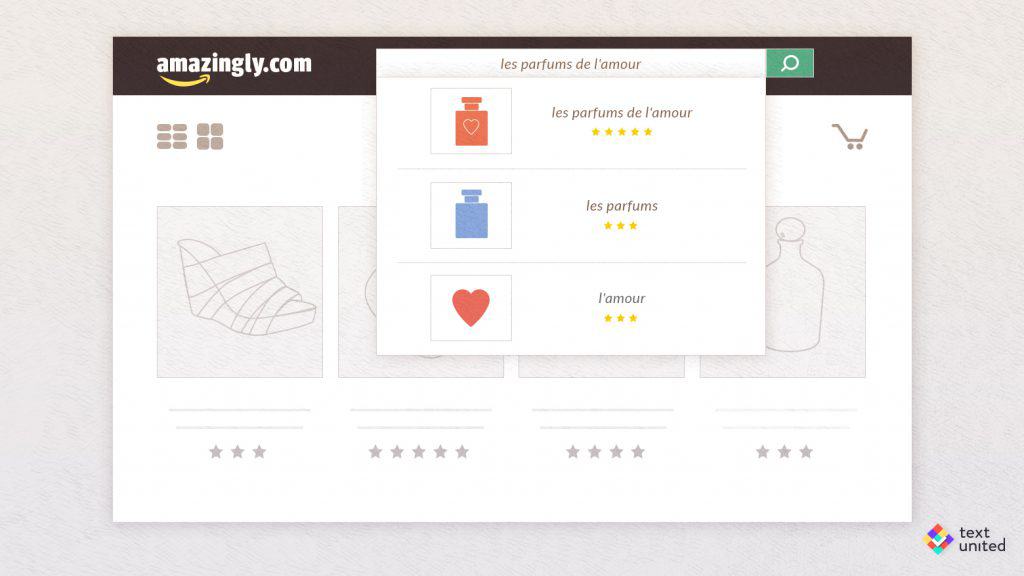
On-site search, also known as an Internal Search Engine is simply a search option on your website. Why is it important, you ask? Well, it’s pretty easy to imagine that every person browsing the world wide web is looking for a specific info. You know it well yourself, whether you manage social media and search for a piece of well-written, curated content on a given subject or maybe you’re searching for a beige, cashmere turtleneck sweater for your mum’s birthday.
Finding the thing that you specifically search for in the limitless ocean of stuff out there is what you want to do. And believe me, whether you manage an informative website on the flapjack octopus (it’s just too cute!) with twenty subsites or a huge e-commerce operation with thousands of landing pages, you want to have an internal search engine present on your website for your visitors’ optimal experience. And if you have your website about the flapjack octopus or e-commerce properly localized, then a localized Internal Search Engine is simply a must. Below you’ll find three very good reason for this.
#1. An Internal Search Engine Gives You The Insights About Your Global Customers’ Needs
This one sounds pretty obvious: An Internal Search Engine shows you what people search for on your website and e-commerce. You should have this type of information available for each localized version of your website. Now, let me ask you this: Why wouldn’t you use this data to cater to your visitors’ and customers’ needs? Their searches give you ideas about:
- new product categories
- new product launches
- different terms or phrases in your product descriptions
- new ideas for blog content
- ideas to key match your relevant keywords with proper content
Assess the searches on your site, then check their results and their relevancy. For localized websites, it’s simply a gold mine of ideas and hints about the feeling your transcreated content gives. If the searches for your localized e-commerce show that ‘giacca nera di lana donna’ is a popular search term, maybe you should think about putting some more black woollen jackets for women on your e-commerce or adding this phrase to the product you already have?
#2. Internal Search Engine Users Are 6 Times More Likely To Convert
Two words: search intent. Remember this sentence from the beginning of this blog post ‘Finding the thing that you specifically search for in the limitless ocean of stuff out there is what you want to do‘? Think about it like this: an on-site search from is a strong predictor of the very intent to convert. If the user searches for a specific item, is decisive about buying it and finds it on your e-commerce via the internal search engine, in their language, why wouldn’t they buy it?
According to ConversionXL, 30% of all users will perform an on-site search. Going further, non-on-site searchers are less likely to convert and they generate less revenue. Last, but not least, on-site searchers are more likely to return to your e-commerce to buy the specific item they found, compared to those, who didn’t use the on-site search. And now tell me – why is it that in the world of data-driven marketing nearly 80% of companies don’t measure their on-site search? Are you one of them? If yes, it’s high-time for a change.
#3. Internal Search Engine Localization Is Not Difficult To Implement
All advanced translation platforms have functions thanks to which you will easily localize your Internal Search Engine. An example? With TextUnited, you are able to export products from your website directly to the Text United TMS and the translation project is created automatically.
But you can export product names using other tools as well. The majority of e-commerce services enable extraction of your data, and TextUnited enables an easy to use and straightforward UI for translating that content. In this way, e-commerce translation and integration with internal search engines is pretty easy.
We deploy two methods for translating e-commerce websites:
#1. a website translation approach to translate the content of an e-commerce website, using the overlay editor
#2. a file-based translation approach to translate exported product names (which are usually .json, .csv, xliff or XML)
These translated files can be implemented for the search engine in the e-commerce system by the user. Translation of this file will use a translation memory from the ‘website translation’ part, meaning that file translation will pick up already translated product names that you previously translated in the overlay editor.
Depending on which CMS you are using, there are a variety of options available, such as plugins that enable the import of data that you have translated with Text United. This will make the content consistent between what you can see on the screen and what you search for in your CMS.
